The Chrysler Building, an iconic Art Deco skyscraper in New York City, was built in 1930 by architect William Van Alen for Walter P. Chrysler, founder of the Chrysler Corporation. The building stands at 1,046 feet (319 meters) with 77 floors, and it held the title of the world’s tallest building before being surpassed by the Empire State Building in 1931. The Chrysler Building is a prime example of Art Deco architecture, famous in the 1920s and 1930s, characterized by sleek forms, geometric shapes, and lavish ornamentation. Its lobby showcases exotic woods, marble, and intricate elevator doors, reflecting the spirit of the machine-age 1920s. Several structural engineering principles, such as a steel frame, setbacks, and moisture protection, were employed in its construction. The building underwent modifications to reflect the ambitions of Walter P. Chrysler. Influenced by various architectural styles, including Art Deco, Egyptian, Assyrian, and Gothic Revival, the building’s exterior ornamentation directly references Chrysler automobile parts. The Chrysler Building’s influence on New York City’s architectural landscape is evident in the incorporation of crowns in later buildings like the Empire State Building and Bank of America Tower. It also set a precedent for using architecture as a corporate symbol, shaping buildings like the MetLife Building and Trump Tower. The building has dual purposes, such as a family legacy and corporate headquarters. Maintenance involves using durable materials like stainless steel, periodic inspections, and significant restoration projects. The building’s design, deeply rooted in the cultural context of the 1920s, reflects the era’s economic optimism, industrial advancements, and architectural trends. The Chrysler Building has undergone upgrades to meet safety and accessibility standards. Renovations in the 1990s faced challenges in restoring the lobby, Cloud Club, and facade and integrating modern systems while preserving historic integrity. Architects visiting the Chrysler Building can arrange private tours, and lessons from its design include the importance of collaboration, embracing technological advancements, and balancing ambition with context. Other recommended architectural landmarks in New York City for architects include the Solomon R. Guggenheim Museum, Grand Central Terminal, Seagram Building, and Empire State Building. Each structure offers unique insights into architectural innovation, preservation, and iconic design.
What is the Chrysler Building?
The Chrysler Building is an Art Deco skyscraper located in New York City. It was built in 1930 and was briefly the world’s tallest building before being surpassed by the Empire State Building. The Chrysler Building was financed and constructed by Walter P. Chrysler, the founder of the Chrysler Corporation automobile company. It was built in 1930 and opened officially on May 27, 1930. Architect William Van Alen designed the building. It was made and financed by Walter P. Chrysler, the founder of the Chrysler automobile company, as a project to bequeath to his sons. The Chrysler Building stands 1,046 feet (319 meters) tall and has 77 floors. At the time of its completion, it was the world’s tallest building but only held that title for 11 months before being surpassed by the Empire State Building in 1931.
The Chrysler Building is known for its distinctive Art Deco design, including the terraced crown and ornamentation depicting images related to automobiles and transportation. It continues to be an iconic part of the New York City skyline today and a top tourist attraction despite going through several changes in ownership over its history. Its precarious financial history, including foreclosure periods and ownership changes, contrasts its enduring fame as an architectural and cultural landmark. The building’s most distinctive feature is its terraced crown, ornamented with gargoyles modeled after Chrysler automobile hood ornaments. The dome is also illuminated at night, highlighting the building’s status as an icon of the New York City skyline. The Chrysler Building continues to operate as an office building to this day. It was designated a National Historic Landmark in 1976.
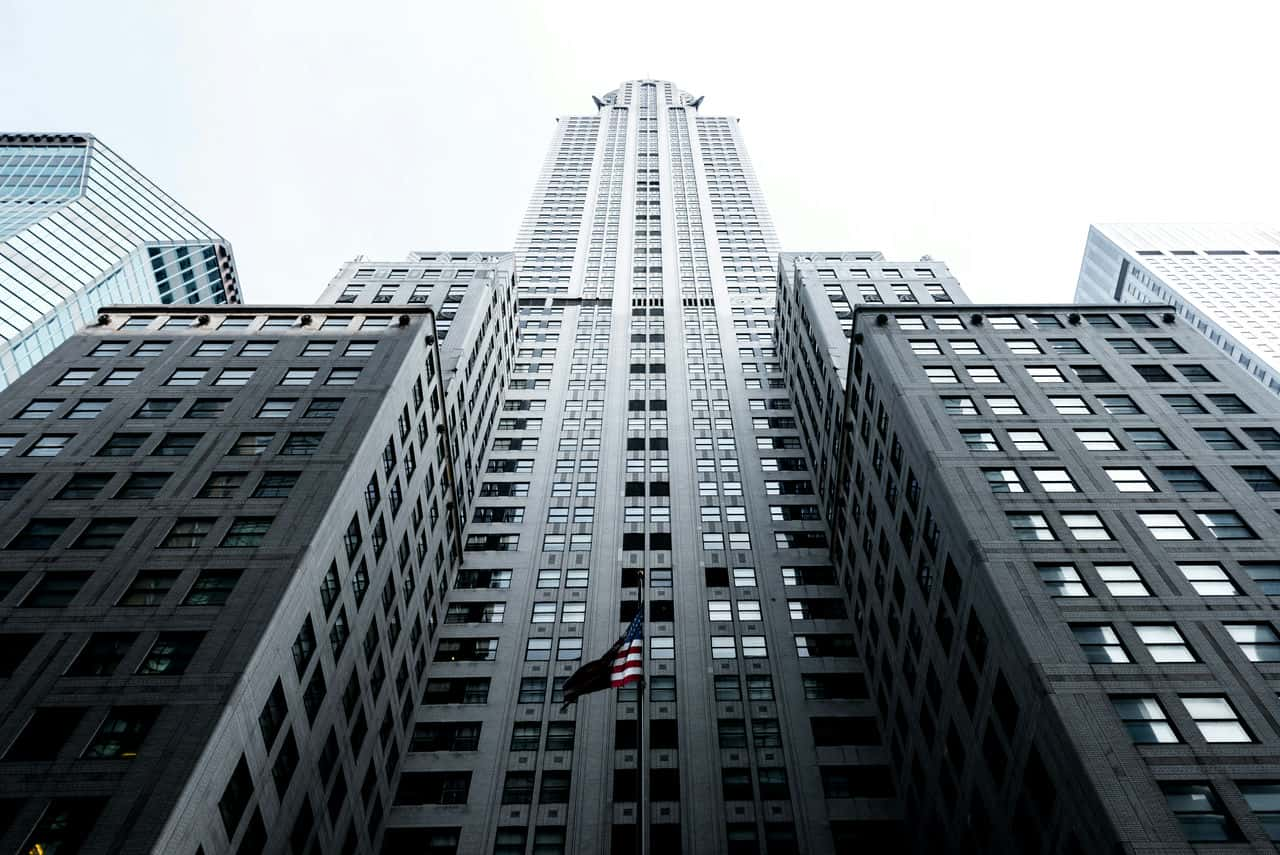
What architectural style is most prominent in the Chrysler Building?
The Chrysler Building is the most prominent example of Art Deco architecture. Art Deco was popular in the 1920s and 1930s, emphasizing sleek, streamlined forms, geometric shapes, and ornamentation. The Chrysler Building encapsulates these defining features. The Chrysler Building’s lobby continues the Art Deco style with its exotic woods and marble mix, elaborate elevator doors with decorative metal grilles, industry and technology murals, and an intricately patterned ceiling. It perfectly captures the sumptuous yet modern aesthetic that defines Art Deco architecture. Critics have praised the Chrysler Building as embodying the spirit of its time – the dynamic, machine-age 1920s – through its bold form and embellishments. The building has been called the epitome of contemporary corporate life and a self-portrait of its developer, Walter Chrysler.
What structural engineering principles were employed in the construction of the Chrysler Building?
Several structural engineering principles were employed in the construction of the Chrysler Building to allow it to reach record heights while maintaining safety and stability. Firstly, the most notable structural aspect is the building’s steel frame, which uses a complex web of crisscrossed steel beams and columns. This allowed the structure to support the weight of the building while also accommodating large open spaces required for office floors. The steel frame made the building lightweight yet strong enough for its height of 1,046 feet (319 meters). Secondly, the steel girders across multiple floors created cantilevered sections that allowed the upper floors to be removed from the base. This made the building’s distinctive profile while maximizing rentable space. The skyscraper is primarily clad in brick with steel ornaments, unusual for buildings over 16 stories. Engineers applied a waterproofing compound to the inner brick walls to prevent seepage from the brick facade. Lastly, the spire and crown exemplify both architectural and structural feats. The spire’s sections were secretly pre-assembled inside the building’s frame. Once the building topped out, the spire pieces were quickly riveted together and hoisted into place, officially making the Chrysler the world’s tallest building. The steel crown similarly tested limits for metalwork in buildings. Its triangular windows and seven arches were complex geometries only made possible recently by new mass-production methods for metal.
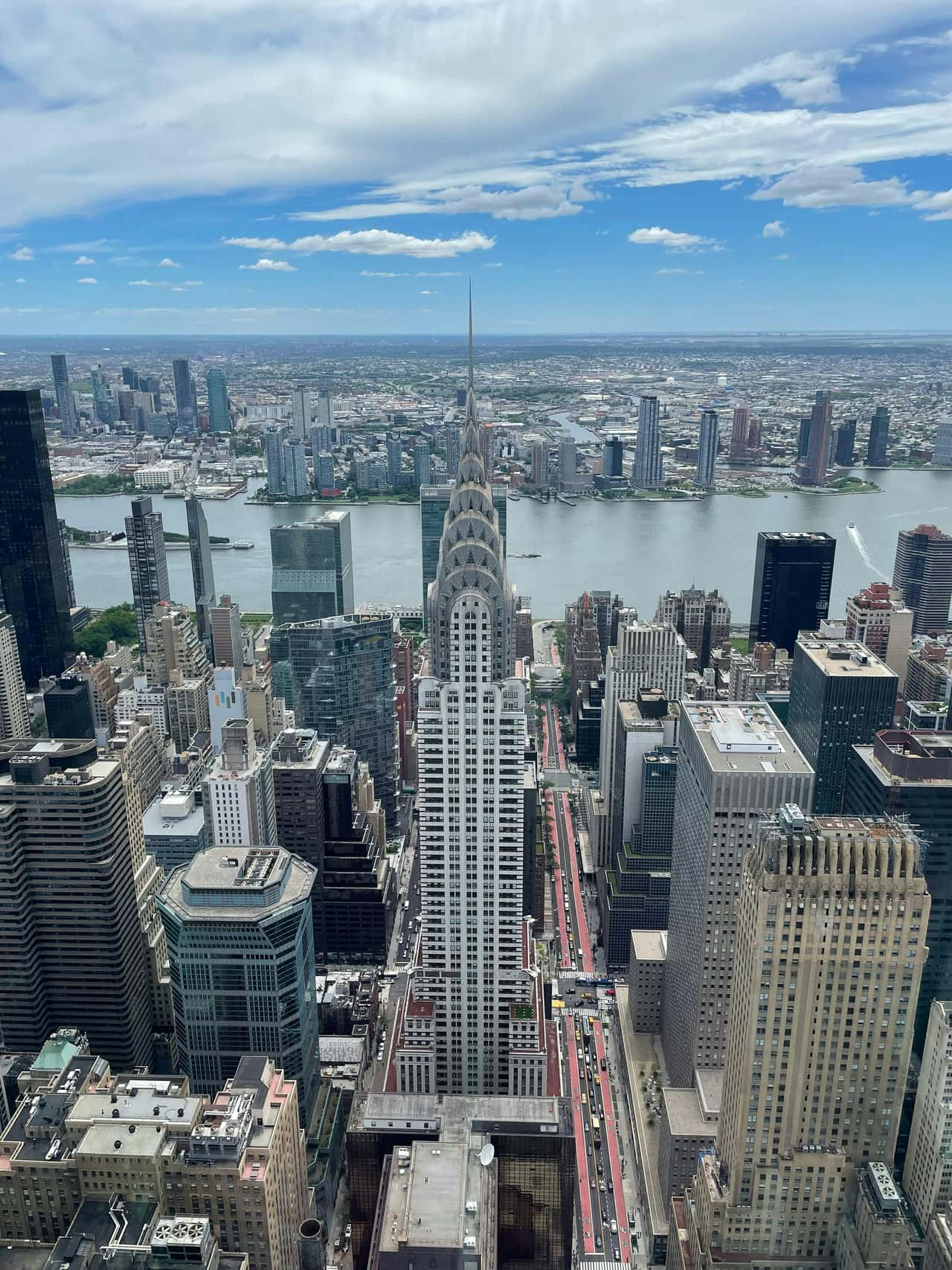
Who designed the Chrysler Building?
The chief architect who designed the Chrysler Building was William Van Alen. Van Alen designed the skyscraper, and the contractor William H Reynolds. Van Alen’s original design was exceptionally elaborate, featuring a decorative glass crown, a triple-height showroom area on the ground floor, and 12 stories made from glass-wrapped corners that would appear to be floating mid-air. However, Van Alen’s concept was too ambitious for Reynolds’s tastes, and he sold the design and lease to the more ambitiously minded industrialist Walter P Chrysler. Chrysler viewed the situation as an opportunity. East 42nd Street, once attractive during the construction of Grand Central Station, had become competitively cheap with plenty of space available. Chrysler believed that by constructing a new epic structure, he could revitalize the neighborhood. Van Alen’s architecture proved to lack enough ambition for Chrysler, and he had Van Alen overhaul his blueprints to include additional levels. The plan was to compete for the world’s tallest structure position. The building’s aesthetic was also changed to reflect the Chrysler vehicle and the 1920s machine age.
What are the historical design influences visible in the Chrysler Building?
The Chrysler Building’s design draws heavily on influences from past architectural styles. The predominant Art Deco elements are visible in the building’s ornamentation, materials, and form. The facade features stylized ornamental details, including hubcaps, fenders, and radiator caps that reflect Chrysler automobile parts. This connects the building directly to the machine age and movement aesthetic central to Art Deco. The building also uses metal and glass in its surface cladding, typical of Art Deco skyscrapers’ sleek, streamlined forms. In the lobby design, one sees Egyptian and Assyrian revivalist styles, popular early 20th-century revivals of ancient aesthetics. For example, the elaborate elevator doors are decorated with lotus flower motifs inspired by Egyptian design. The wall friezes depict workers building the tower, representing industry and modern construction methods. The building also contains Gothic revival elements, particularly in Chrysler’s personal office space. The 69th-floor office features intricate hand-carved wood doors and leaded glass windows that evoke a medieval aesthetic, updated for an early 20th-century industrialist.
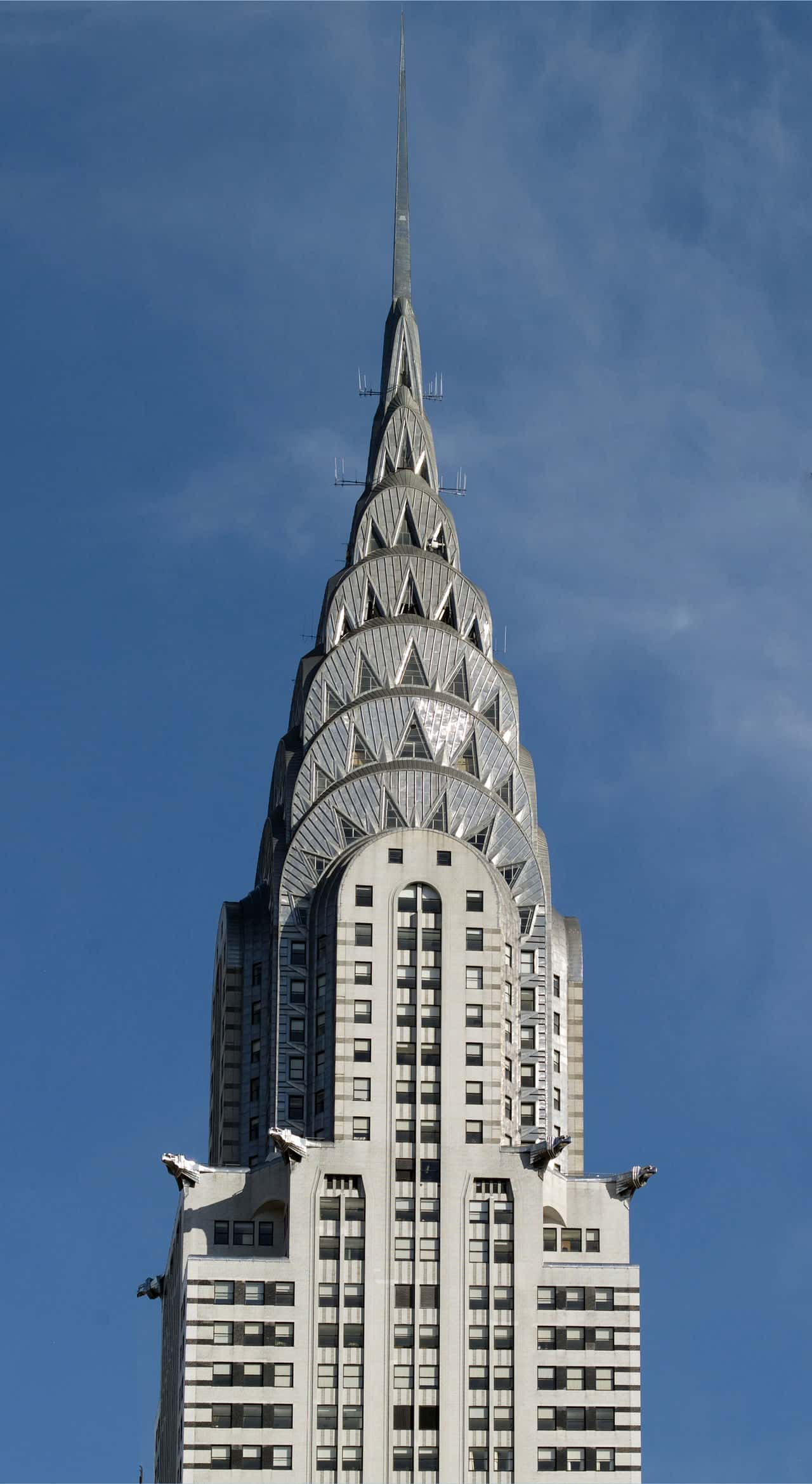
How has the Chrysler Building influenced the design of other buildings in New York City?
The Chrysler Building has influenced the design of other New York City buildings in several key ways. Firstly, it demonstrated the power of a distinctive crown or spire in creating a memorable skyscraper silhouette. The passage states that “later buildings like the Empire State, Citicorp Building, and Bank of America Tower incorporated crowns or pyramid caps as central elements of their designs.” The Chrysler Building’s iconic terraced crown and sunburst pattern established the precedent for using decorative crowns to enhance recognition and identity. Secondly, the Chrysler Building proved the viability and appeal of Art Deco ornamentation on skyscrapers. Later deco towers like the American Radiator Building adopted similarly stylized embellishments. Thirdly, the Chrysler Building cemented the idea of using iconic architecture for corporate branding and identity as “a symbol of the company and its ambition.” Its design intentionally reflects and promotes the Chrysler brand. Buildings like the MetLife Building and Trump Tower continued this concept of towers as corporate advertisements. The Chrysler Building’s crown, ornamentation, and branding continue to shape skylines as key precedents. It remains a pinnacle of both Art Deco style and using architecture to create corporate monuments.
What purpose does the Chrysler Building serve, and how does the design help?
The Chrysler Building serves two key purposes, reflected in its design. Firstly, the building was designed by Walter P. Chrysler as a personal project to leave to his children. The primary aim was to create an enduring legacy and inheritance for Chrysler’s family by constructing an iconic skyscraper bearing the family name. Secondly, the building was also intended to serve as the headquarters for the Chrysler Corporation, housing its offices and branding the corporation through its design. The building’s Art Deco ornamentation reflects Chrysler automobile parts, turning the skyscraper into a towering advertisement reflecting the company’s products and ambitions. The building’s record height and distinctive crown cemented its status as an architectural landmark, fulfilling Chrysler’s legacy ambitions. The dual aims were to leave a monument for Chrysler’s heirs and promote his automobile company through an iconic headquarters. The Chrysler Building’s design successfully delivers on both fronts by creating a visual Art Deco tower that acts as a family inheritance and corporate logo.
How is the Chrysler Building maintained?
The Chrysler Building was maintained in several ways. Firstly, the building’s stainless steel facade was constructed using Enduro-KA2 and Rezistal/Stainless Steel, which requires less maintenance than other facade options. In over 85 years, the facade has only been manually cleaned twice, demonstrating the durability of stainless steel. Secondly, periodic maintenance is performed on the spire and crown decorative elements, with workers scaling the building to inspect the steel panels on the spire. A steeplejack also performs inspection and emergency response work at the tower’s heights. Thirdly, major renovation and restoration projects have been undertaken over the years. One such project was a $100 million (€92 million, £78 million) renovation in the 1990s that “resuscitated” the building after its decline. More recent restorations of the lobby ceiling, spire, windows, brickwork, and facade ornamentation have been overseen by preservation architects. Lastly, while specific ongoing maintenance practices are not provided, the building would require typical commercial skyscraper maintenance like window washing, inspections, HVAC and electrical upkeep, etc. Special care is likely taken to preserve original design details in the Chrysler Building.
How does the Chrysler Building reflect cultural and contextual relevance in its design?
The Chrysler Building’s design directly reflects the cultural context and aspirations of 1920s America. Firstly. The Art Deco ornamentation incorporates Chrysler automobile parts, linking the building to the machine age and mass production aesthetic central to the era. The gargoyles are shaped as winged caps, and the hubcap and fender motifs tie the tower to the rise of the auto industry and celebrate modern industrial advancements. Secondly, the quest to make the Chrysler Building the world’s tallest structure embodied the excessive ambition and economic optimism of the late 1920s in New York City. Architect William Van Alen’s secret spire project to claim height supremacy mirrored the fierce competition between skyscraper developers. The building’s bold form and height encapsulated contemporary desires to conquer the skies and demonstrate technological prowess. Lastly, The Chrysler Building’s distinctive crown and sleek, geometric surface detailing epitomized the modernist and Art Deco principles rapidly redefining skyscraper design in the Jazz Age. Even as it was surpassed in height, its strong identity ensured its enduring status as an icon of 1920s modernity. Eight decades later, it remains a crystallization in stone, steel, and glass of the developing American metropolis of the early 20th century.
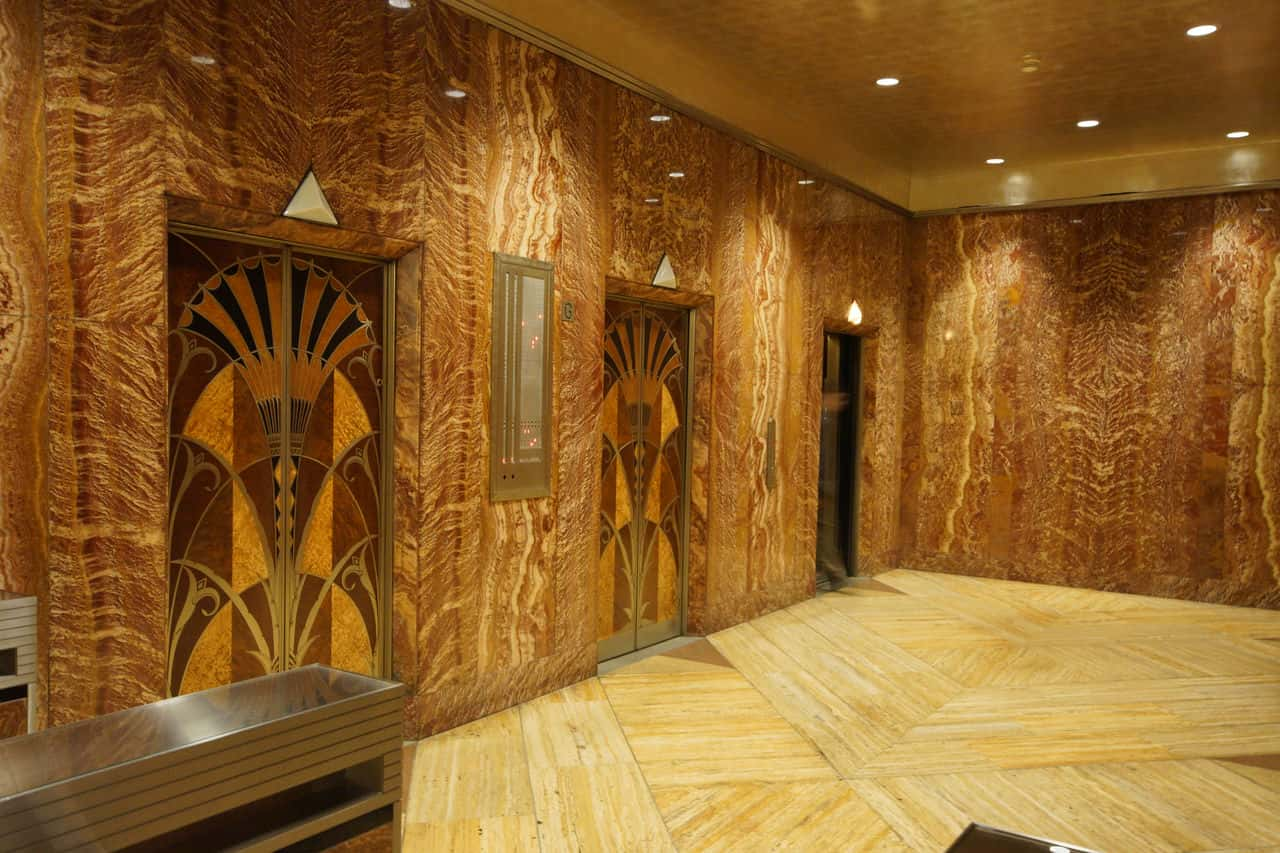
What architectural trend or movement does the Chrysler Building represent?
The Chrysler Building is one of the finest movements of the Art Deco architectural style. The Chrysler Building encapsulates these Art Deco hallmarks through its distinctive crown, facade details, materials, and form. Its terraced dome is shaped like a radiator cap and embellished with sunburst patterns and vaulted, triangular windows in a cruciform groin design. The building exterior features ornamentation reflecting Chrysler automobile parts, including winged hood ornaments, hubcaps, fenders, and radiator caps. The building also emphasizes verticality, using innovative materials like stainless steel, aluminum, and brick. The form features tiered setbacks dictated by 1920s zoning laws, creating a distinctive silhouette. The lobby continues the Deco style with exotic woods and marble, metal elevator doors, and an intricately geometric ceiling mural saluting industry and modernity. The Chrysler Building belongs first and foremost to the Art Deco movement while remaining a uniquely American iteration of the international style’s principles.
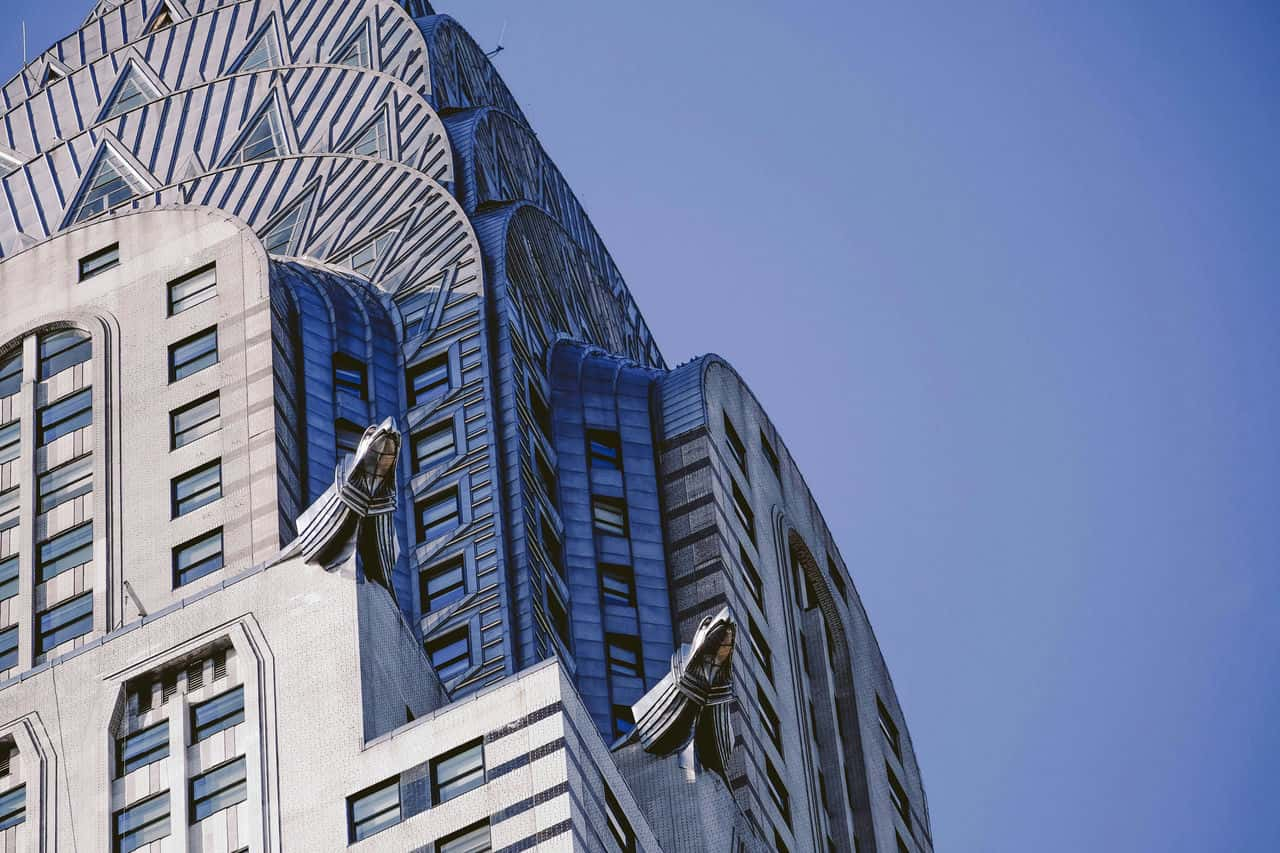
What are the challenges faced during the restoration of the Chrysler Building?
The Chrysler Building underwent a major $100 million (€92 million, £78 million) renovation in the late 1990s led by the owner, Tishman Speyer. After decades of neglect, this renovation aimed to restore the building to its original Art Deco glory. The restoration faced several key challenges. Firstly, the building’s lobby had been altered over the years in insensitive renovations. The original Mexican onyx and wood paneling had been painted over, plastic lighting panels were installed, and holes were drilled to add air conditioning vents. Restoring the lobby required scraping off paint, repairing holes, and sourcing replacement onyx and wood paneling to match the original. Secondly, the Cloud Club executive dining room on the 66th to 68th floors had been abandoned and left to decay since the 1970s. Restoring the Cloud Club meant undoing significant water damage, preserving original finishes like walnut paneling, and deciding whether to keep later additions like dropped ceilings. Thirdly, the building’s facade and distinctive stainless steel spire suffered corrosion and damage. Rust had to be removed while preserving as much original steel as possible before applying new finishes. Fourthly, accommodating modern building systems and safety codes threatened to undermine the building’s historic integrity. Installing new electrical and HVAC while preserving original corridors and ceiling spaces was a major challenge. Lastly, the Chrysler Building’s ground floor space had to balance serving the office tenants above while reactivating what had become an underused, uninviting lobby space. The renovation successfully balanced upgrading the structure while respecting its place as an architectural icon.
How does the Chrysler Building comply with contemporary safety and accessibility standards?
The Chrysler Building is exempt from some modern construction codes. However, significant upgrades have been made to improve safety and accessibility. Firstly, several renovations have upgraded fire safety systems to current standards. Fire stairs, alarms, emergency lighting, and sprinkler systems have all been replaced while retaining historic design features like lighting sconces. Safety glass, fire doors, and fireproofing materials have been installed where possible without visible changes. Modern backup power and water supply infrastructure have also been discretely added. These comprehensive upgrades meet city safety codes to protect visitors and tenants.
Secondly, an ADA-compliant entrance ramp with a wheelchair lift has been added to the Lexington Avenue lobby entrance. Automatic door openers were also installed at all lobby doors to improve accessibility, allowing wheelchair users to enter and exit freely. Due to space constraints, the narrow corridors and elevator configurations inside the lobby do not fully comply with accessibility standards. Thirdly, the retail spaces have been redesigned with barrier-free shop entrances and circulation for wheelchair users. Upper floors are required to comply with accessibility codes under the Americans With Disabilities Act. Retrofits like wider doorway openings, wheelchair-accessible bathrooms, and curb ramps have been integrated as tenants renovate office spaces.
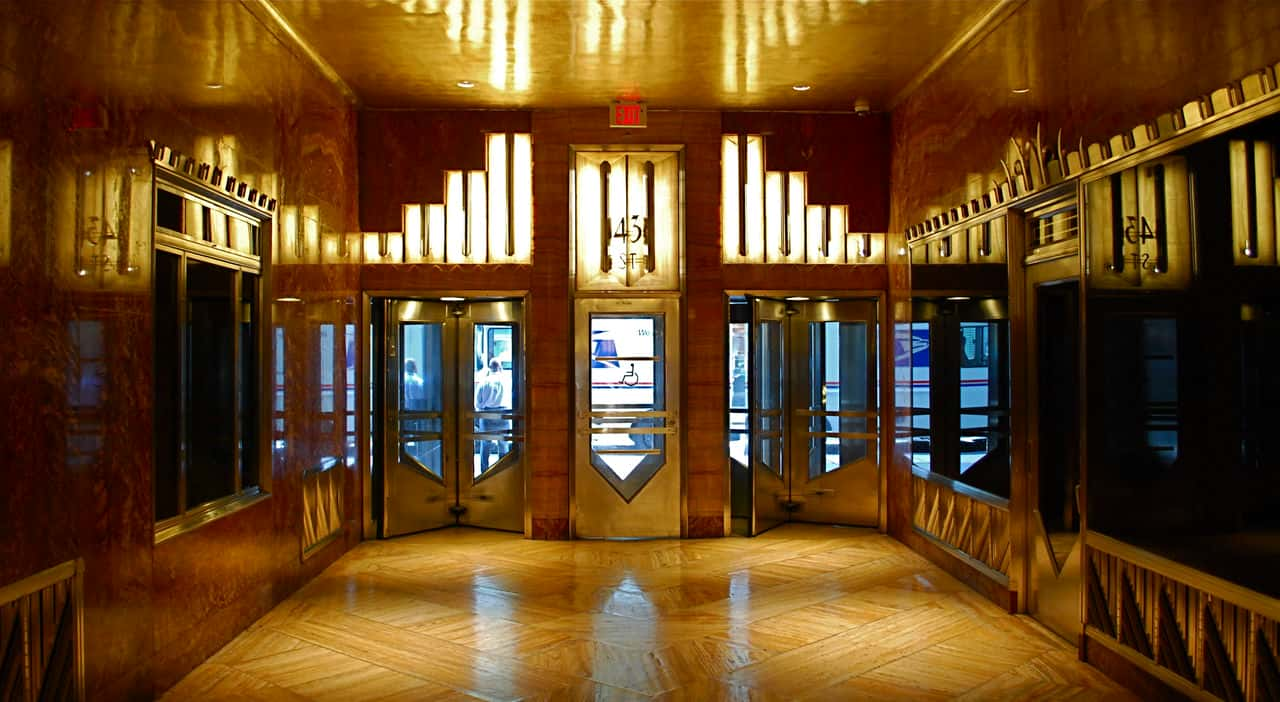
Lastly, the Chrysler Building’s owners have introduced ongoing maintenance and upgrades to mitigate hazards. For example, inspectors regularly survey the building envelope to ensure that falling debris hazards are promptly addressed. State-of-the-art elevator systems and routine safety testing also help a 90-year-old landmark meet modern expectations for the daily safety of tenants and visitors. The Chrysler Building’s continuing evolution balances preserving its historic character and improving the safety, accessibility, and functionality expected of an actively used office building today.
Are there any specific tours for architects or architecture enthusiasts visiting the Chrysler Building?
Yes, small private group tours can sometimes be arranged by contacting the building management in advance. These tours are generally restricted to public areas like the lobby and former Cloud Club executive lounge. Custom tours may be possible for student groups or professional organizations focused on architecture, design, or real estate. Self-guided smartphone apps like “AIA Guide” also have background details on the Chrysler Building that enhance an independent visit.
What lessons can architects learn from the design and construction of the Chrysler Building?
The Chrysler Building remains one of the finest skyscrapers ever built, offering several lessons for architects. Firstly, the collaboration between architect William Van Alen and his patron, Walter P. Chrysler, was crucial in realizing such an ambitious building. This project shows the heights possible when an architect finds a client willing to take risks pursuing great design. Secondly, rapid technological progress allowed pioneering buildings like the Chrysler. Its steel frame pushed foundations to unprecedented depths into Manhattan’s bedrock while elevators and mechanical systems enabled heights unthinkable only decades prior. Emerging technologies today, like parametric design, intelligent building systems, and 3D printing, can similarly drive fresh architectural possibilities. Capitalizing on the latest construction and data innovations remains a crucial opportunity for architects. Thirdly, the mania of 1920s New York real estate shaped the Chrysler Building’s drive to claim the “world’s tallest” title – even if only briefly. This speculative development culture that birthed dozens of now-iconic towers contains cautionary lessons today amidst booming cities. Not every architect can or should attempt to climb “higher, faster, bigger” without regard for context or rational objectives. Finally, the Chrysler Building’s endurance as a beloved masterpiece stems from its pleasing proportions and detailing that recall great classical works. Time has proven the Chrysler is no stunt but a skillful embodiment. Substance over mere extravagance has secured this shining Art Deco icon’s reputation through a century and beyond.
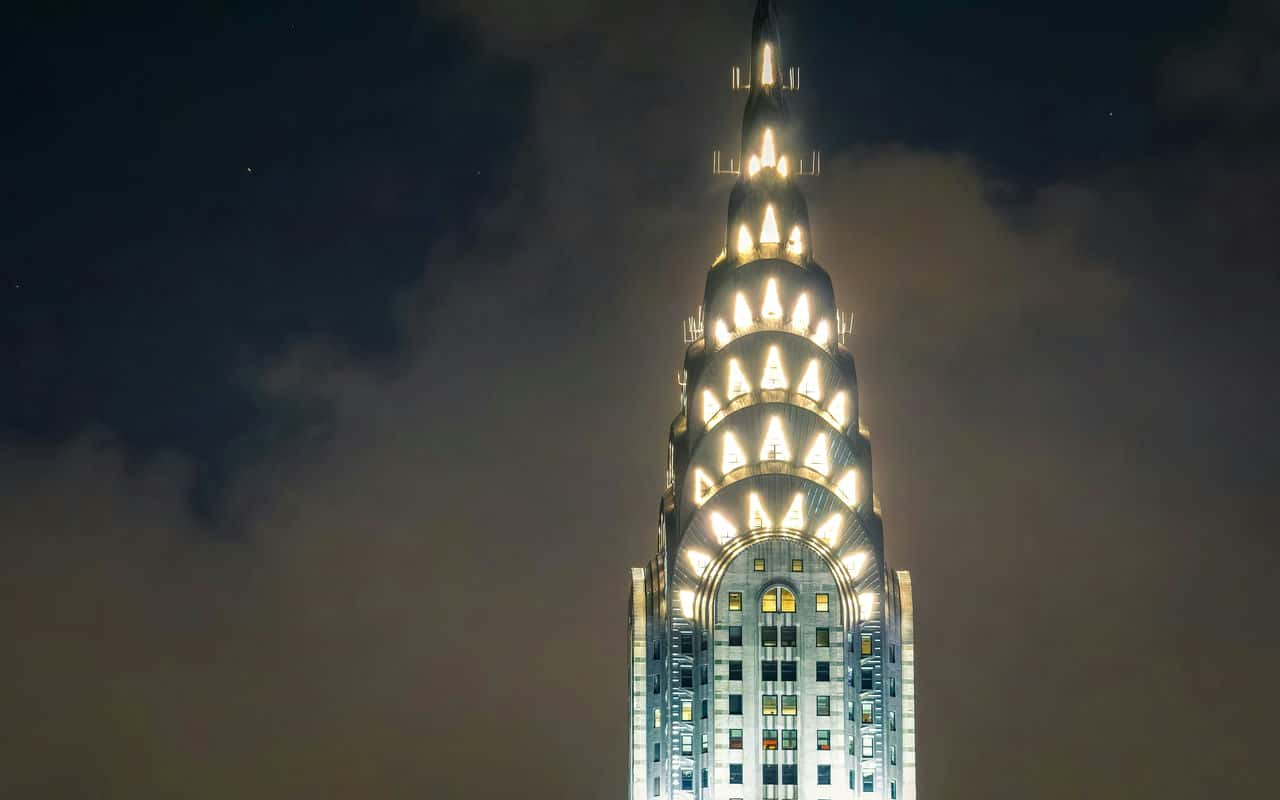
What are the best architectural landmarks in New York to visit as an architect?
Listed below are the best architectural landmarks in New York City to visit as an architect:
- Empire State Building: The Empire State Building is a must-visit for architects interested in the evolution of high-rise construction. Designed by Shreve & Lamb and completed in 1931, this iconic structure was once the world’s tallest building. Its distinctive stepped form and steel frame construction represent significant advancements in skyscraper technology. The building’s observation decks provide a unique perspective on New York City’s urban layout, making it not just an architectural icon but also a key vantage point for understanding the city’s development.
- Guggenheim Museum: The Guggenheim Museum by Frank Lloyd Wright is a landmark destination for architects exploring organic architecture. Opened in 1959, its unique spiral structure and continuous ramp challenge traditional museum layouts, offering an uninterrupted journey through the exhibits. Wright’s design philosophy, which sought harmony between the structure and its environment, is demonstrated in the museum’s integration with its urban context. The building’s form and function make it a pivotal study in architectural innovation.
- Chrysler Building: The Chrysler Building is an architectural symbol of the Art Deco era, making it an essential visit for architects studying this design movement. Completed in 1930 and designed by William Van Alen, its distinctive stainless steel crown and spire showcase exquisite decorative artistry. The building’s interior, especially its lobby, reflects the opulence of the late 1920s and early 1930s. It stands as a testament to the era’s architectural creativity and the technological advancements in skyscraper design.
- The High Line: The High Line is an outstanding example of urban regeneration and landscape architecture, offering architects insights into innovative urban design and public space revitalization. Transformed from an elevated freight rail line into a public park by Diller Scofidio + Renfro and James Corner, it blends horticulture, art, and design within a dense urban context. This project demonstrates the potential of adaptive reuse in urban environments and the integration of green spaces within cityscapes.
- One World Trade Center: One World Trade Center is a significant architectural site for architects interested in skyscraper design and urban resilience. Completed in 2014 and designed by David Childs of Skidmore, Owings & Merrill, it stands as a symbol of rebirth on the site of the original Twin Towers. The building features advanced safety and sustainability elements, making it a modern architectural marvel. Its design respects the site’s history while marking a new era in high-rise construction.
- Flatiron Building: The Flatiron Building is an architectural icon and a pioneering skyscraper in New York City, significant for architects studying early 20th-century urban architecture. Completed in 1902 and designed by Daniel Burnham, its unique triangular shape and Renaissance Revival style were innovative for its time. The building’s slender profile and distinct facade have made it a symbol of New York’s architectural heritage, offering insights into the city’s architectural evolution.
- Brooklyn Bridge: As one of the oldest suspension bridges in the United States, the Brooklyn Bridge is a landmark of engineering and architecture. Completed in 1883 and designed by John Augustus Roebling, it connects Manhattan and Brooklyn across the East River. The bridge’s Gothic-style stone towers and intricate cable arrangement make it a study in both aesthetic beauty and structural ingenuity. For architects, it represents a significant moment in the history of bridge design and urban connectivity.
- Seagram Building: The Seagram Building, designed by Ludwig Mies van der Rohe and Philip Johnson, is a fundamental site for architects interested in modernist architecture. Completed in 1958, this skyscraper is celebrated for its functional aesthetics and adherence to the ‘less is more’ philosophy. Its use of high-quality materials, like bronze and travertine, and the concept of the elevated plaza as an urban space, have influenced subsequent office building designs. The building exemplifies the International Style and has had a lasting impact on corporate architecture.


